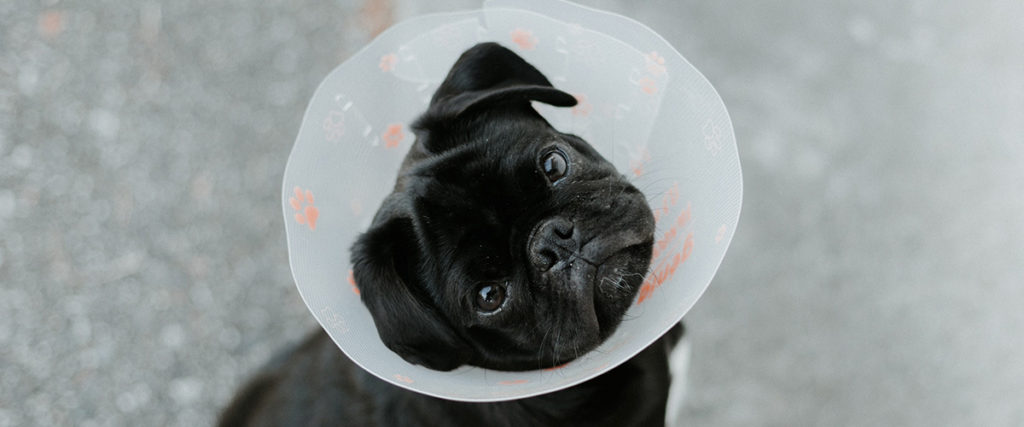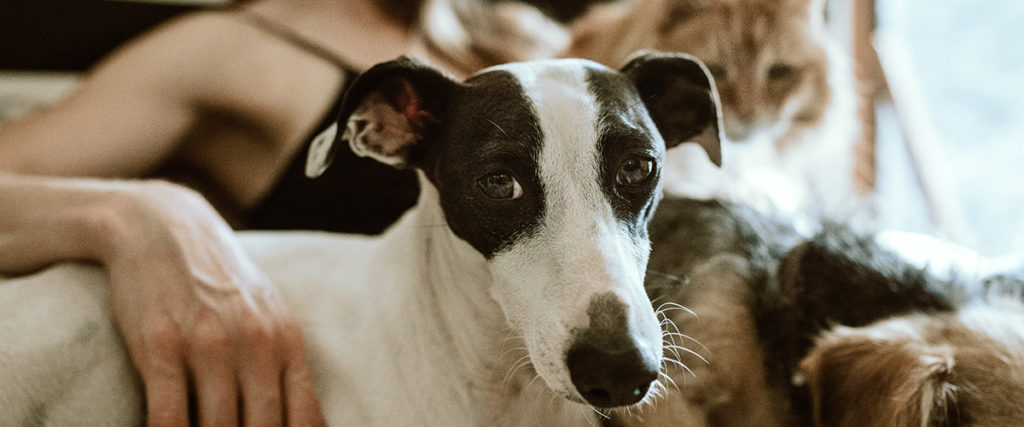Here you will find the answers to all your frequently asked questions like “what is pet insurance?”, “do I need pet insurance?”, “how do I choose between pet insurance providers?”, “which plan suits me?” and “how will cover help me in a time of crisis?”.
Contents: All you need to know about pet insurance cover & responsible pet ownership.
- What is pet insurance?
- How does pet insurance work?
- What does pet insurance cover?
- Why do you need pet insurance?

What Is Pet Insurance?
Pet insurance is a policy of cover bought by a pet owner to offset unforeseen costs. This is typically significant vet bills that they could not otherwise afford, due to sudden accidents, emergencies or illnesses.
Pet insurance helps with the difficult choices you would otherwise have to make regarding the health and treatment needed for your furry family.
There are specific pet insurance plans that provide cover if your pet develops an illness, that requires surgery, in-hospital care and/or rehab. Other frequent conditions that develop and can be extremely costly include skin disease, gastro-intestinal conditions as well as lameness.
Then there are accidents, such as if your pet is knocked over by a car, eats a poisonous flower, or swallows something it shouldn’t have. Most pet insurance plans cover the costs of accidents, within an annual maximum.

How Does Pet Insurance Work?
Pet owners choose the plan that suits their budget, pet and living conditions. They are required to either pay a monthly or annual premium. While their payments are up-to-date, their cover is active. They may submit claims for treatments or conditions covered by their chosen plan, regardless of how old their pet is.
What a lot of people don’t know is that pet insurance is a short-term agreement you make with an underwriter based on a set of calculated risks which are current today. This means it is in essence a month-to-month agreement that you can change at any time. Your claiming patterns will affect the setting of your premiums and your terms and conditions, such as excesses. Inflation, costs of vet bills etc will be taken into account also at your annual renewal time when reviewing your cover and premiums.
Two essential things to know about pet insurance are as follows:
- Pet insurance does not cover pre-existing conditions
- Pet insurance, like car or house insurance, is not meant for everyday care or repetitive claims for the same condition
You may be required to pay an excess on a claim, which could be a minimum payment, or a % of the claim. This depends on the required procedure, condition, timing of the claim, and/or treatment.
A pet insurance broker will either arrange a refund to you directly after you have paid your vet, or in some cases, an insurance provider may be willing to arrange to settle the bill directly with your vet or hospital.
With some insurance providers, you can also upgrade or downgrade your plan at any time (if your pet is below a certain age). Always keep in mind, taking out insurance is for future incidents or conditions, which means you cannot take out cover or upgrade your cover for a condition that has already shown symptoms or been diagnosed – or an accident that has already happened.
Some pet insurance plans are limited to accidents. Other more comprehensive plans cover post-operative rehab, behavioural treatments and prescription food. Some even offer a condolence benefit, advertising for missing pets or supplement benefits!
Pet Insurance in South Africa
There are several pet insurance providers available for South African pet owners to choose from. Some offer pet insurance as an add-on to general insurance for your house or car. Only one, MediPet, is dedicated to pet insurance – in other words, we only do pets. Why does this matter? Well, pets (like humans) are complicated living bodies. A broker who sells car insurance would not have the vet medical expertise to fully understand the implications around the breed of your dog, or how one condition may relate to another. Vet knowledge truly helps when weighing in on whether a claim should be paid, assisting with developing and changing plans as well as placing exclusions or waiting periods on a pet’s cover.
There are other major differences between pet insurance providers. Many do not disclose all the terms and conditions until you have activated your cover, which sometimes may be too late. Not all provide comprehensive cover, in some cases, limits are placed on the number of claim amounts within your annual maximum making it impossible to ever get the full cover you thought you had. Lower premiums always mean less cover. Making the right choice for your fur-family is essential.
How does the age of your pet affect cover?
All insurance providers have age limits on plans – the difference is that some have plans for all ages of pets that include illness cover. Insurance generally does have different premiums for older pets on joining – although the premiums shouldn’t increase as the pet ages once it is on cover. The good news is that once your pet has joined some insurance providers, like MediPet, so long as you keep your cover active, they will be covered for life.
Important questions to ask when choosing pet insurance
- Do you cover all breeds, and importantly, common breed conditions?
- Do you offer preventative care routine cover?
- Do you apply sub-limits on treatments within your annual maximum limit for general cover?
- Do you offer chronic care support?
- Does your pet need to be hospitalized in order to claim under the illness cover benefit?
- Do you cover dental care out of routine care maximum or general annual maximum?
Why pet insurance and medical aid are not the same thing
The terms “pet insurance” and “pet medical aid” are often used interchangeably, as many pet owners believe pet insurance is the same as medical aid for humans.
They are not the same. Similarities are simply that you pay a monthly premium for cover of specific medical procedures and treatments, with the aim of easing the financial burden of future medical bills.
The difference is that pet insurance is designed to provide major financial help after sudden, unforeseen accidents or illnesses. Pet insurance does not cover pre-existing conditions – which includes any condition where symptoms may have occurred either before taking out cover, or during a waiting period.
Where medical aid differs from pet insurance is that medical aid provides for minor treatments, ongoing treatments and every day vet visits. Pet insurance does not provide for this, although some do offer add-on options for routine care such as vaccinations & tick/flea treatment.
Pet insurance is also not bound by the same laws and regulations as medical aid. They are not required to cover a set of Prescribed Minimum Benefits like medical aids are.
For pet insurance cover like MediPet, you won’t need pre-authorisation or be restricted to a pre-defined network of vets and hospitals. As long as the healthcare provider you visit is qualified and registered with the relevant regulatory bodies you can take your pet to them. You can claim for the visit and treatment, less the applicable excess. Additionally, vets don’t need to sign your claim forms.

What Does Pet Insurance Cover?
Like medical aid, pet insurance plans are available in different shapes and sizes. The cover you get will depend on the plan you choose. The higher the premium, the more expansive the cover.
Basic pet insurance plans should cover in-hospital care and post-surgery care. This includes follow-up visits and tests from accidents such as allergic reactions, motor vehicle accidents and injuries from other animals.
Limited plans cover a prescribed number of claims within a claim amount for both accidents and illnesses. They don’t offer complementary cover such as rehab and supplements.
A comprehensive plan will cover accidents, illnesses and emergencies. There are also added benefits such as prescription food, behavioural therapy, and holistic wellness (this could include physiotherapy, homeopathy, hydrotherapy, acupuncture, etc).
While plans are usually similar, they may differ because pet insurance companies are allowed to create their own benefits. For example, MediPet offers a Chronic Care Support benefit that covers ongoing treatment for sickly pets – something that isn’t standard with pet insurance plans. This is the only time pet insurance can act like a human medical aid. The plan will make a balance of funds available upfront that can be claimed for an agreed upon condition that requires ongoing treatment.
Depending on the provider you choose and whether they cover common breed conditions, you may need cover for conditions that your pet may be prone to such as spinal issues, lameness, cherry eye and more. This will vary according to the breed of your pet.
Pet insurance plans don’t usually cover pregnancy, grooming, elective procedures and unprescribed special foods.
How to get the most out of your pet insurance
Pet insurance is designed for infrequent, large claims after significant, unforeseen accidents, emergencies or illnesses. It is not for every routine vet visit, or even just the smaller claims. This means that insurance underwriters may review your premiums or terms and conditions after you claim. Possibly recalculating your premiums should you be deemed a “multi claimant” or when your risk changes. They may also exclude direct or related conditions, or add waiting periods to your cover.
Some insurance providers even offer incentives not to claim, such as a “no claim bonus”.
Always be forthcoming in your disclosure so avoid nasty surprises and never withhold or falsify information about your pet.
So long as you follow the terms and conditions of your cover, pet insurance can offer essential peace-of-mind and provide invaluable assistance when you need it most.
Attempting to save on premiums by investing or depositing into a bank account can prove difficult, as it would take decades to save just a year’s annual cover.

Why Do You Need Pet Insurance?
1 in 3 pets need emergency vet treatment each year. Bills from emergency treatments would take a massive chunk out of your savings. For some potential pet owners, the prospect of high medical expenses can be a deterrent to taking your pet to the vet when you suspect injury or illness, or even adopting a pet in the first place. Additionally, and tragically, the possibility of expensive procedures and medicines can lead to a decision to put a pet down, known as “elective euthanasia.”
This shouldn’t be an option and doesn’t have to be, if you have pet insurance.
Pet insurance offers financial assistance so you don’t have to compromise on the quality of care your pet receives. It helps you prepare for situations by giving you peace of mind that you won’t have to go it alone when the unexpected happens and you’re faced with hefty bills.
Having a pet is one of the best things in the world, but too often people decide to adopt a dog or cat without considering the more serious aspects of being a pet owner (like vet bills) particularly if they are heading into their twilight years. Once a condition has already occurred, it is too late to get cover for it, as it is now a “pre-existing condition”, so think ahead.
The last thing you should have to worry about is a bill you hadn’t budgeted for and simply can’t afford when money is already tight. Especially when it is completely avoidable.
Pet insurance offers peace of mind that your fur child’s well-being is insured and you will have financial help in a time of crisis.
During moments of financial unpredictability, this can be a saving grace.
How to get pet insurance
You can get an obligation-free quote with MediPet online – we don’t require you to fill in your banking details. It takes under 2 minutes with MediPet. Contact us if you have any other questions.


